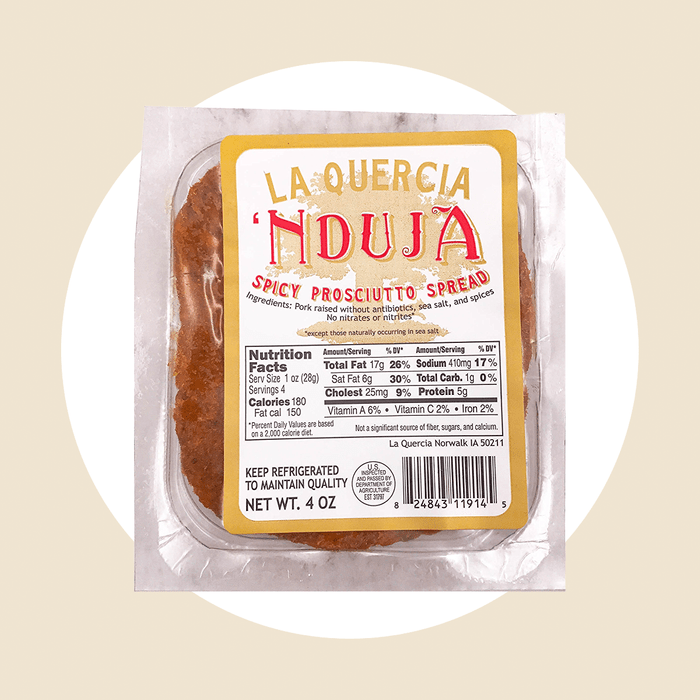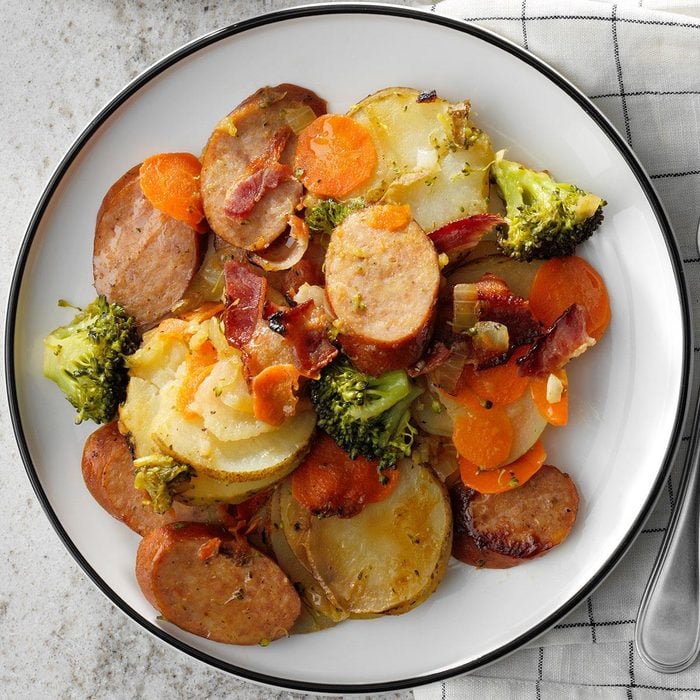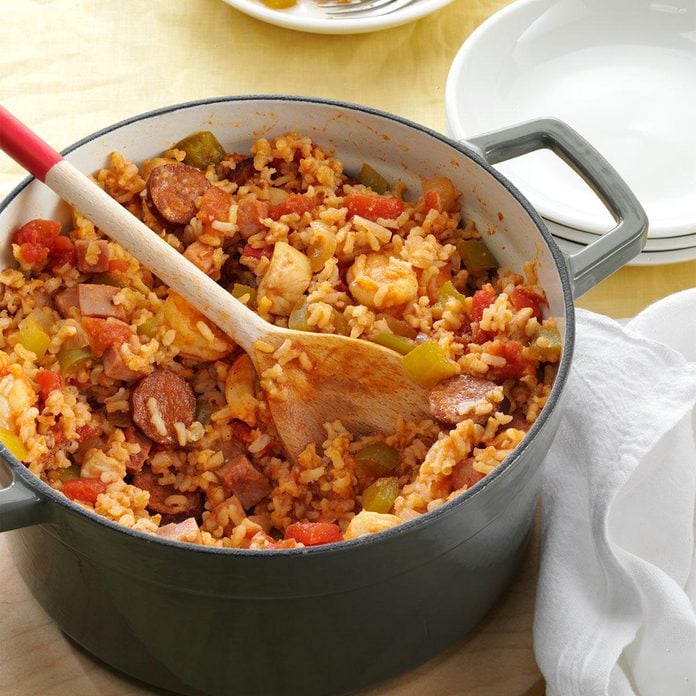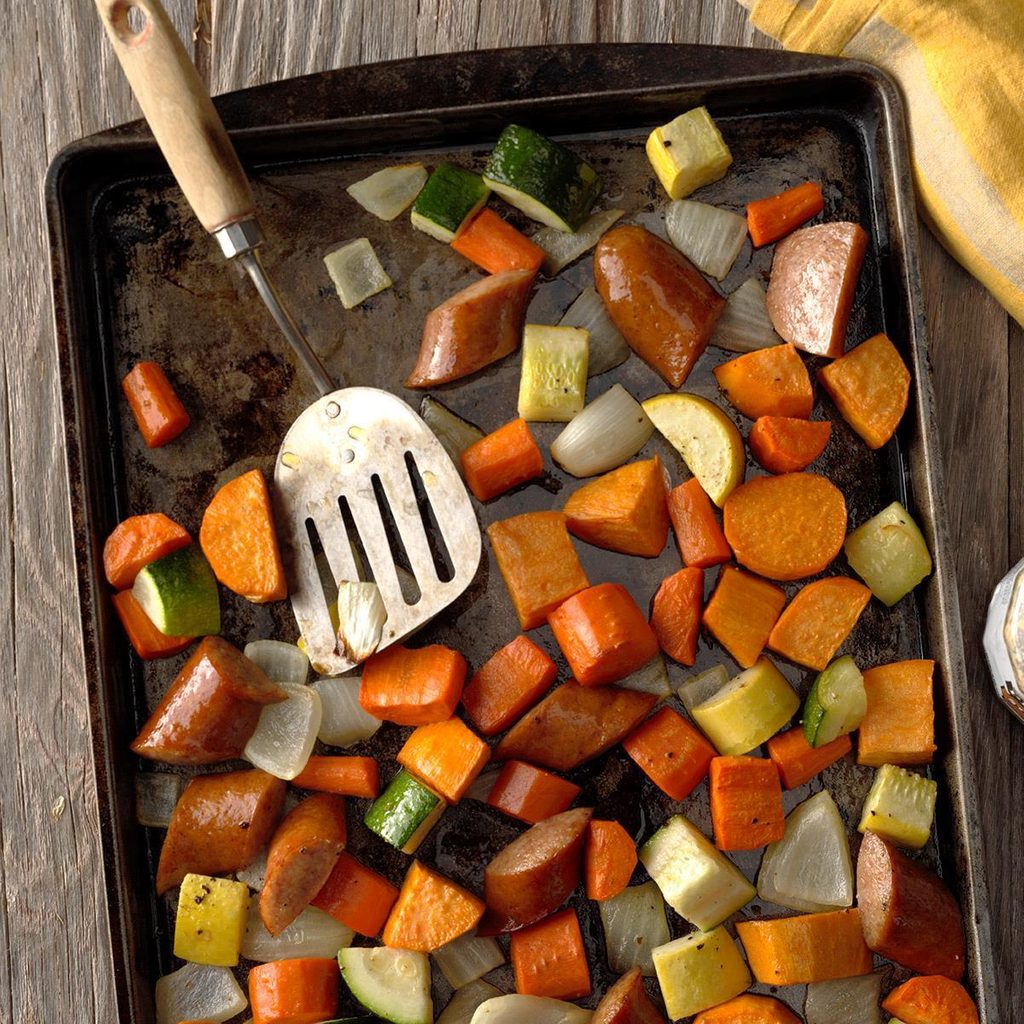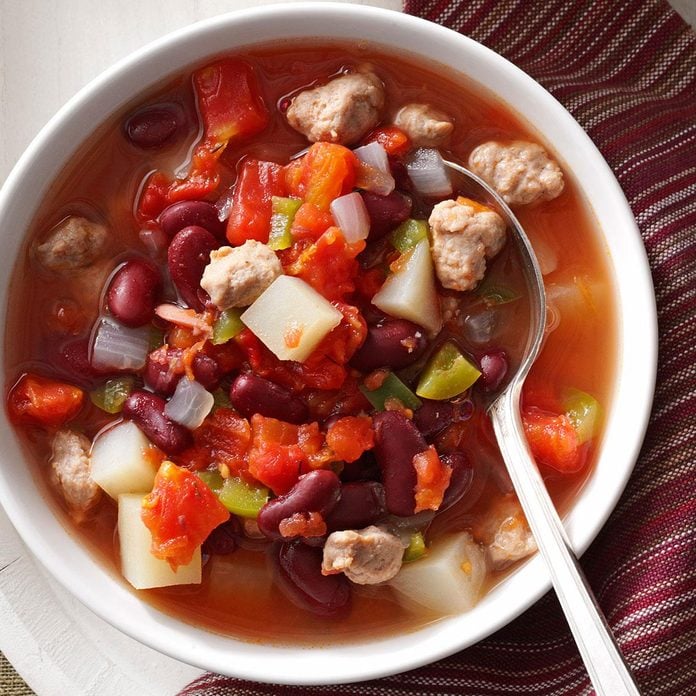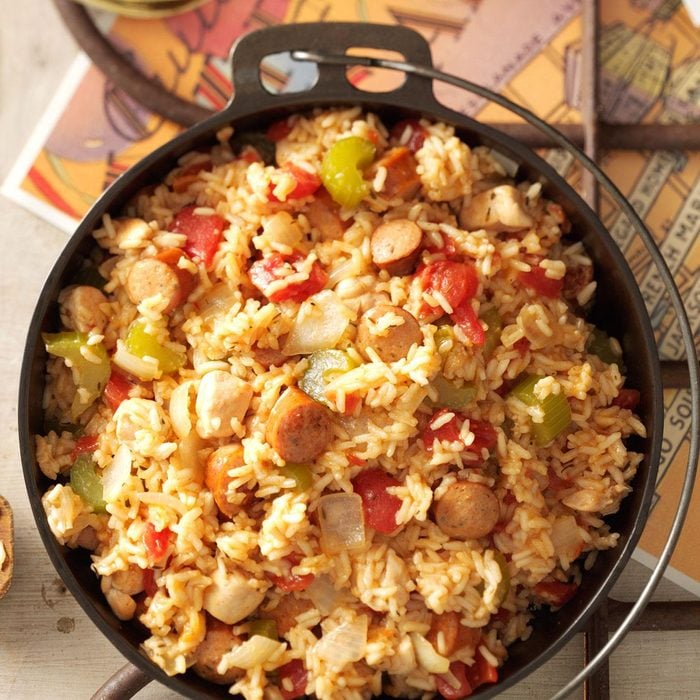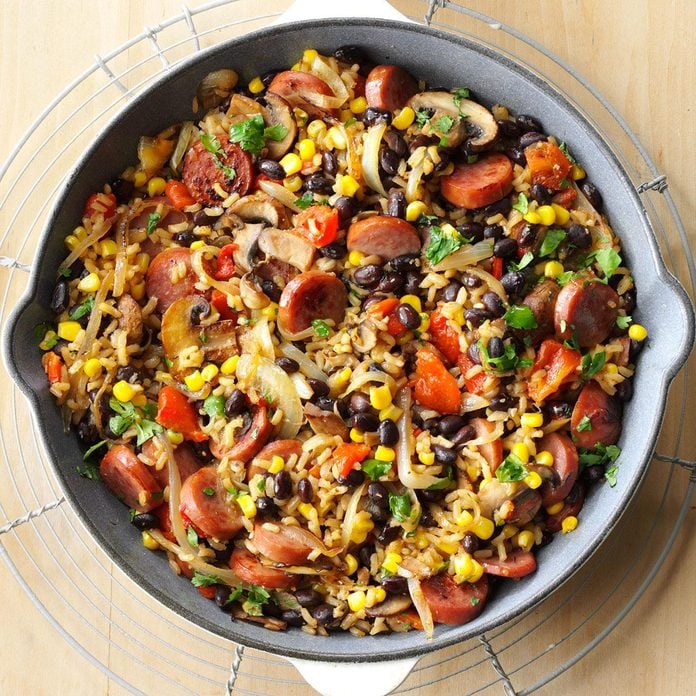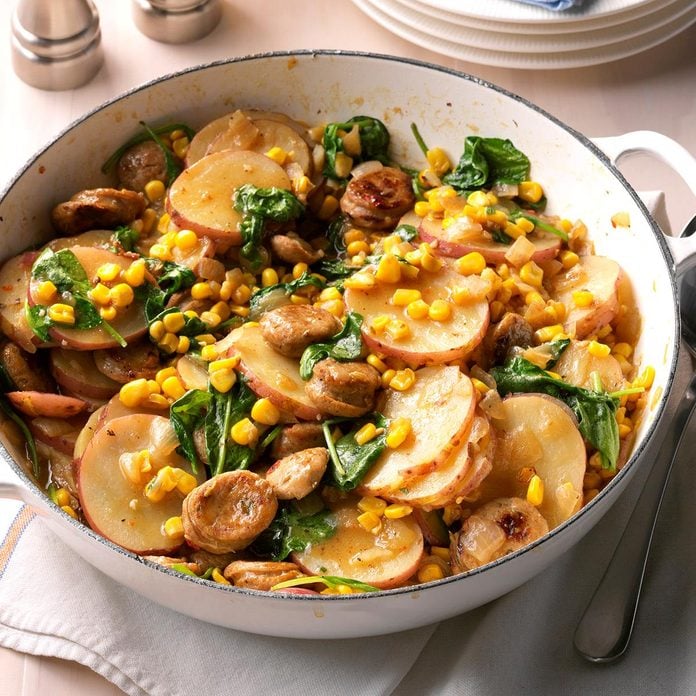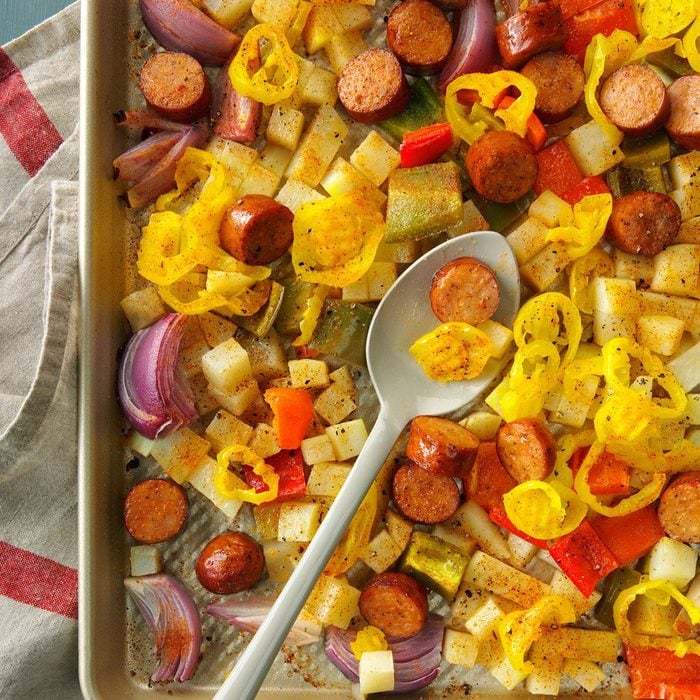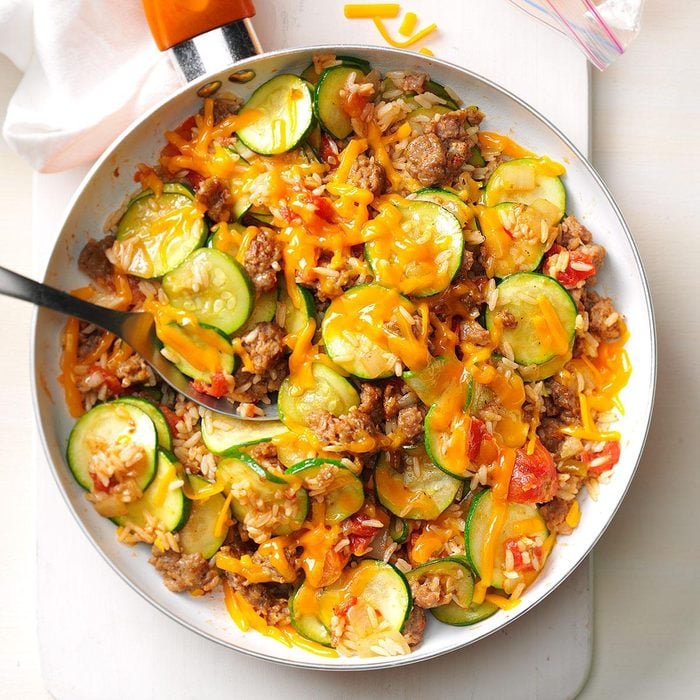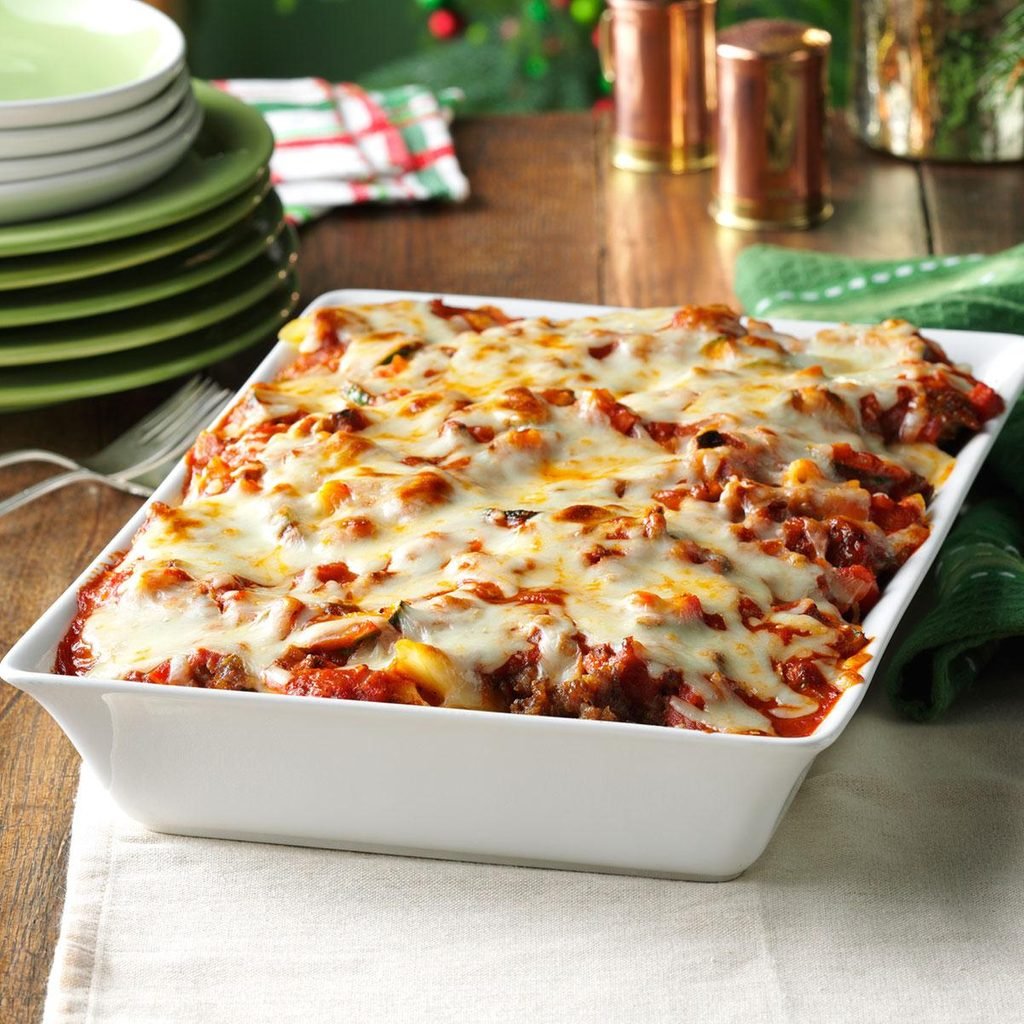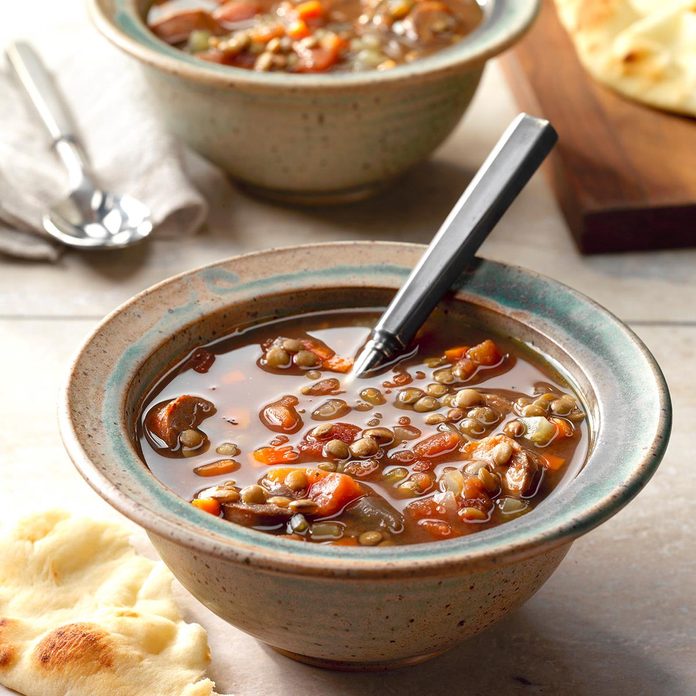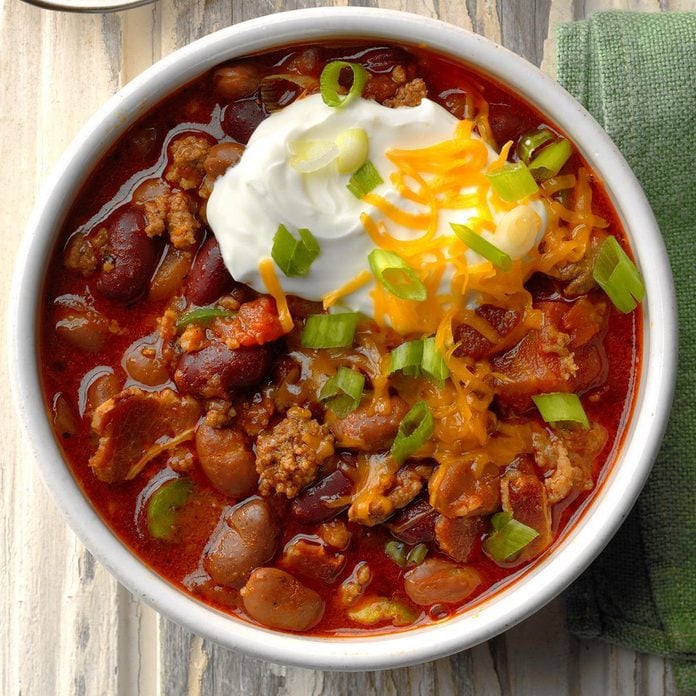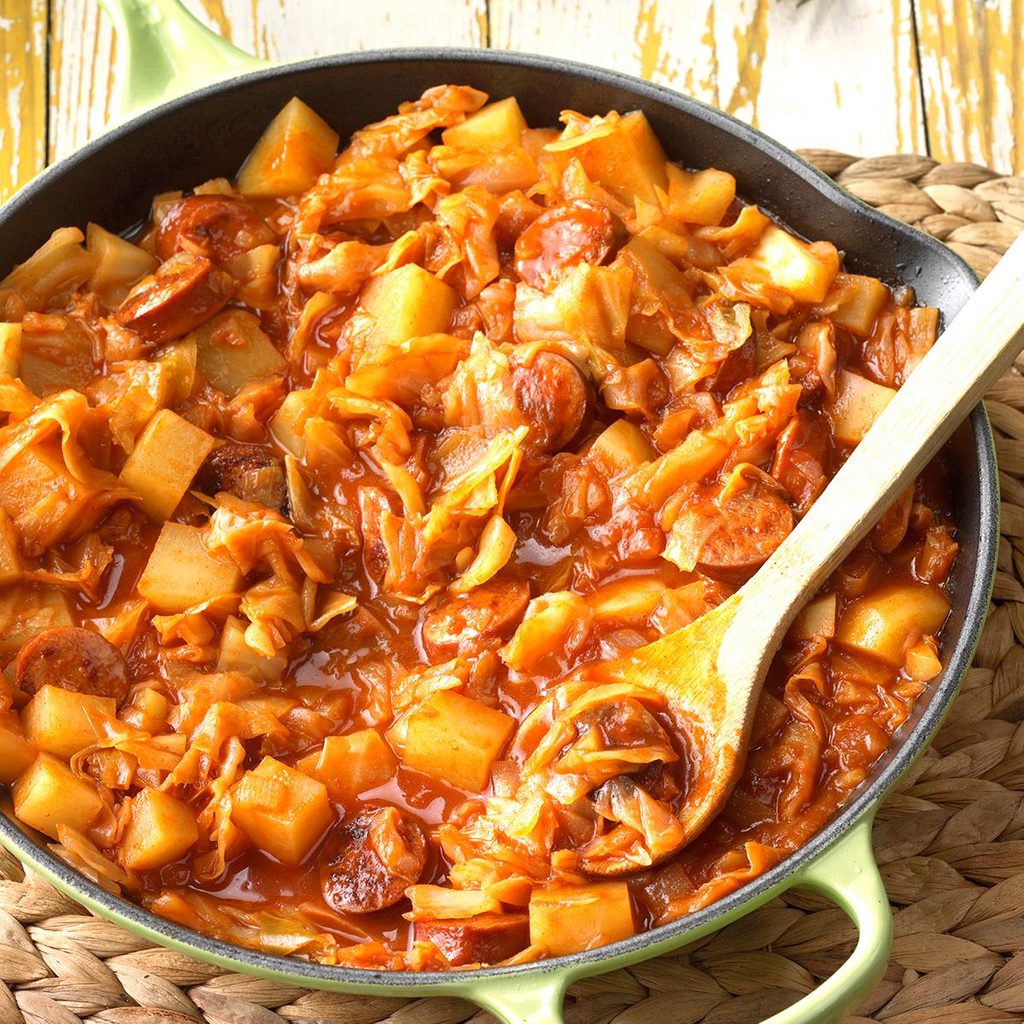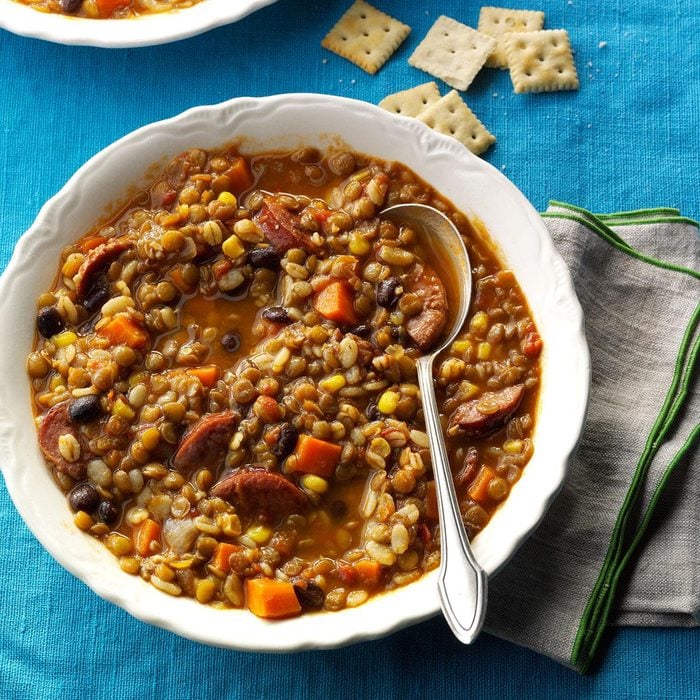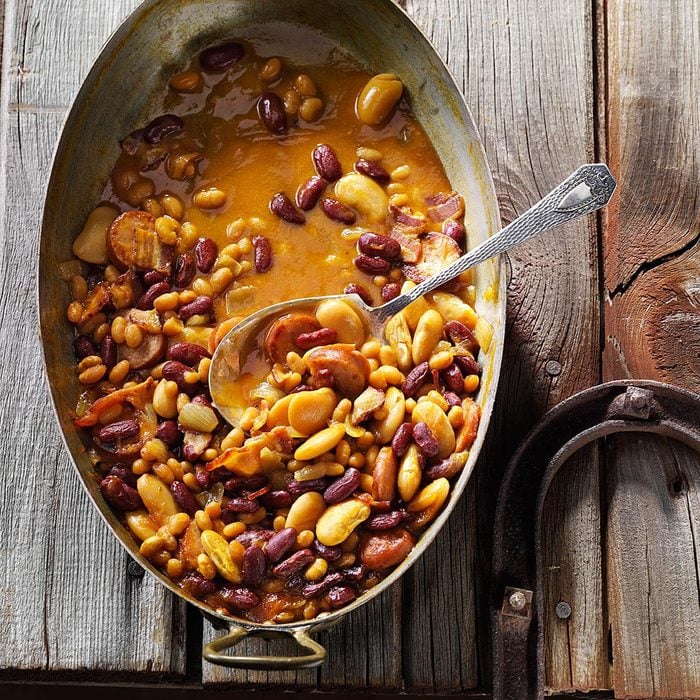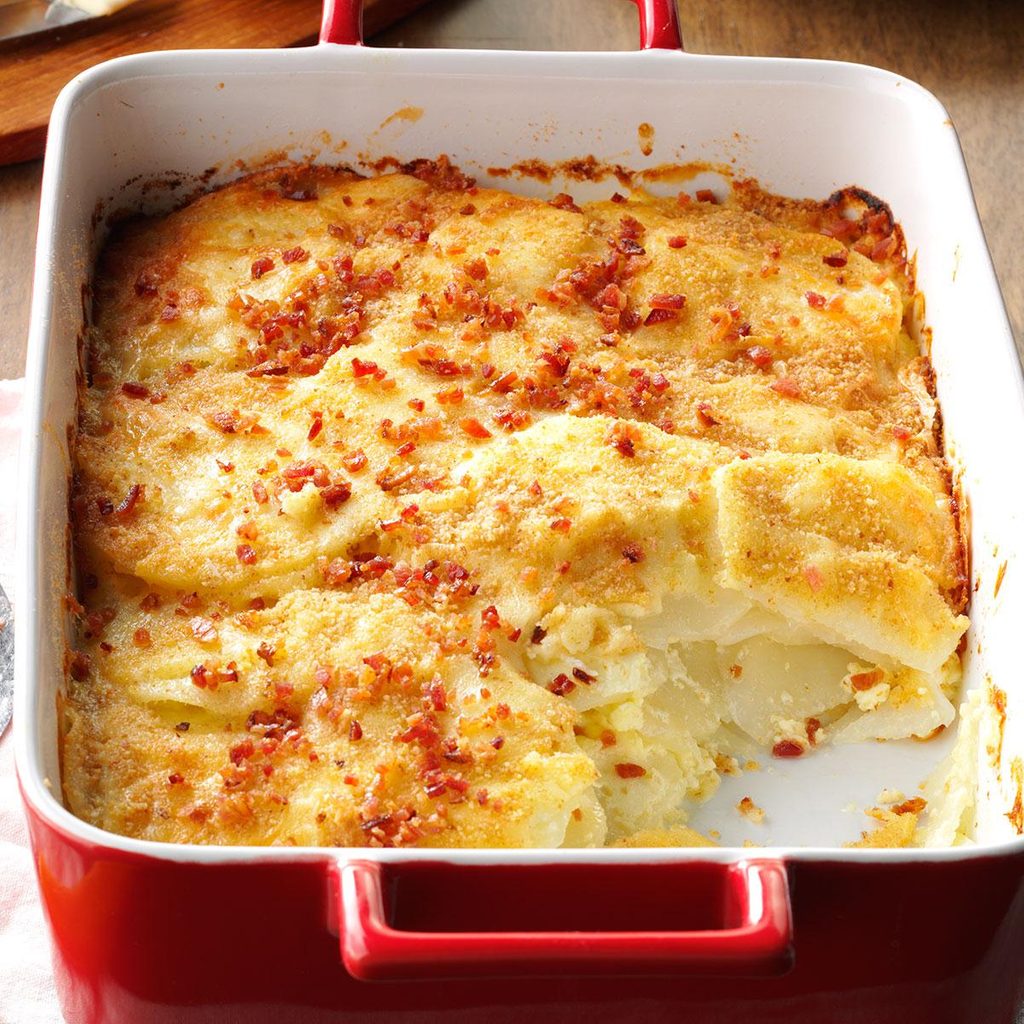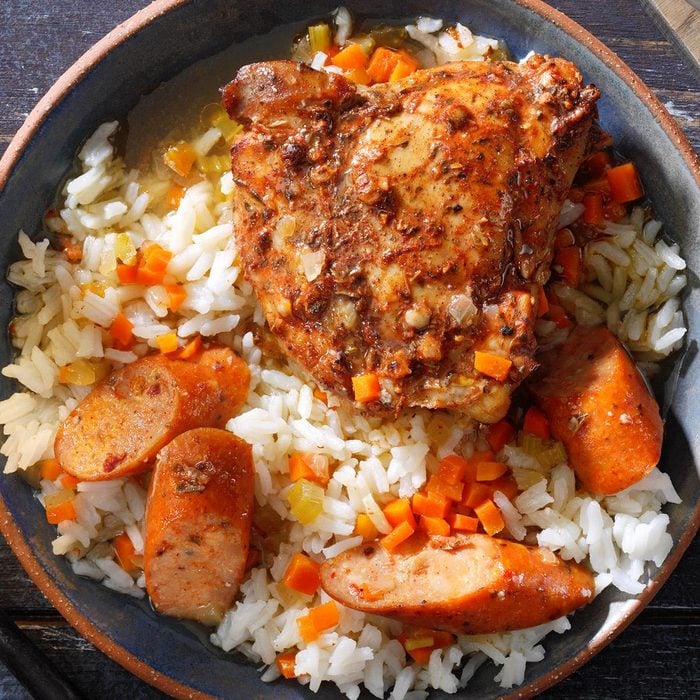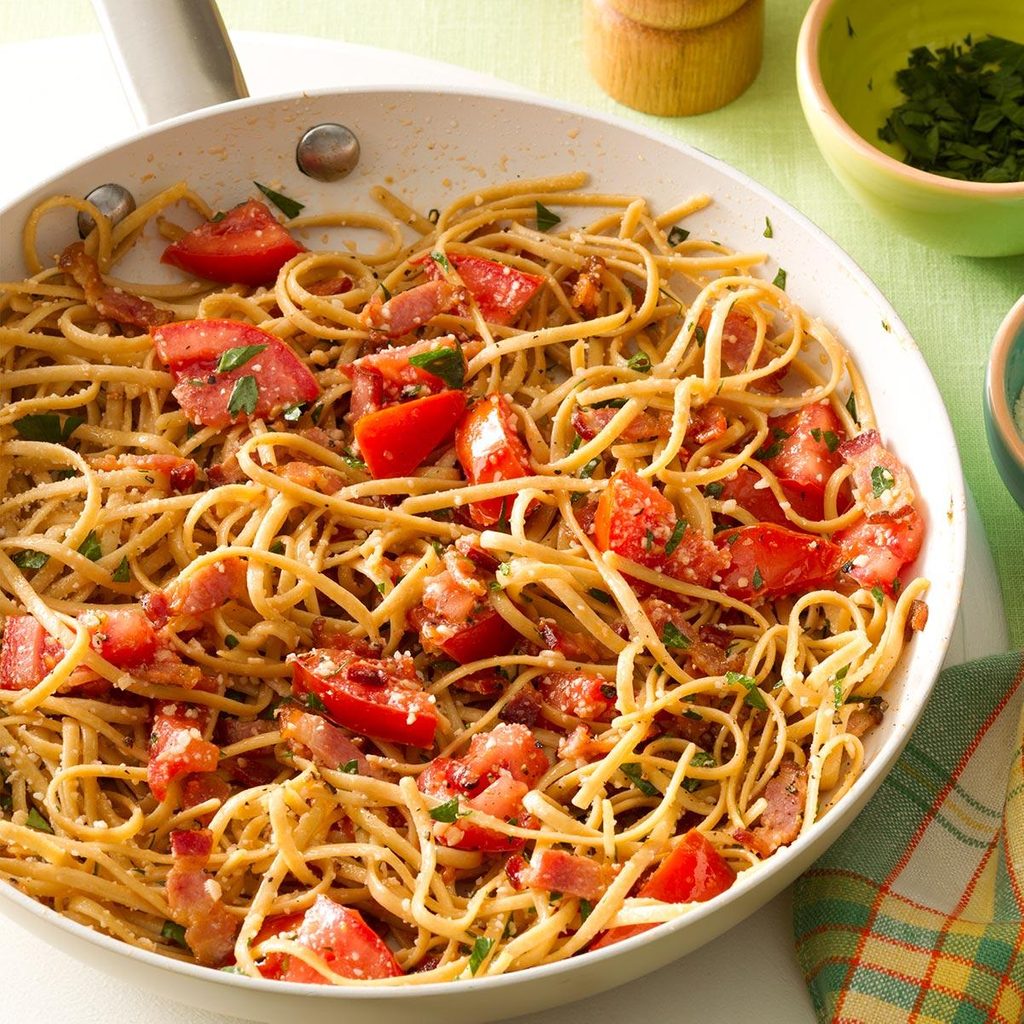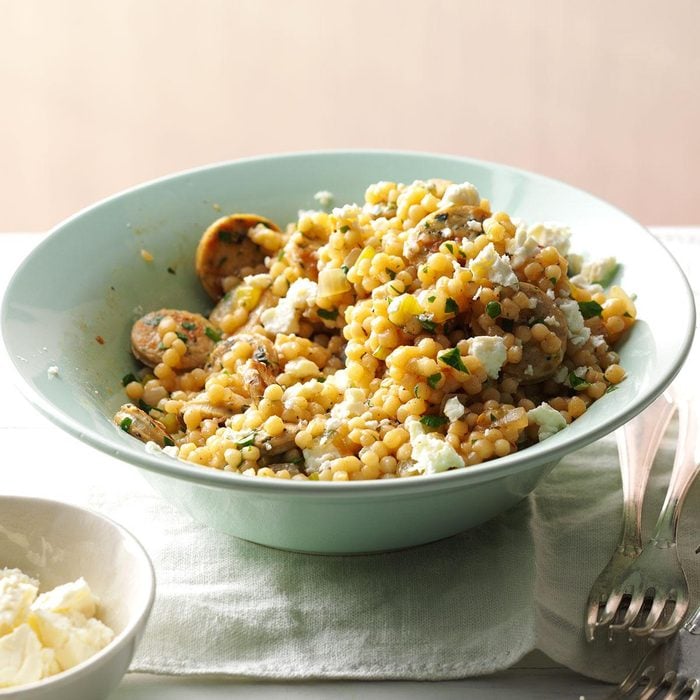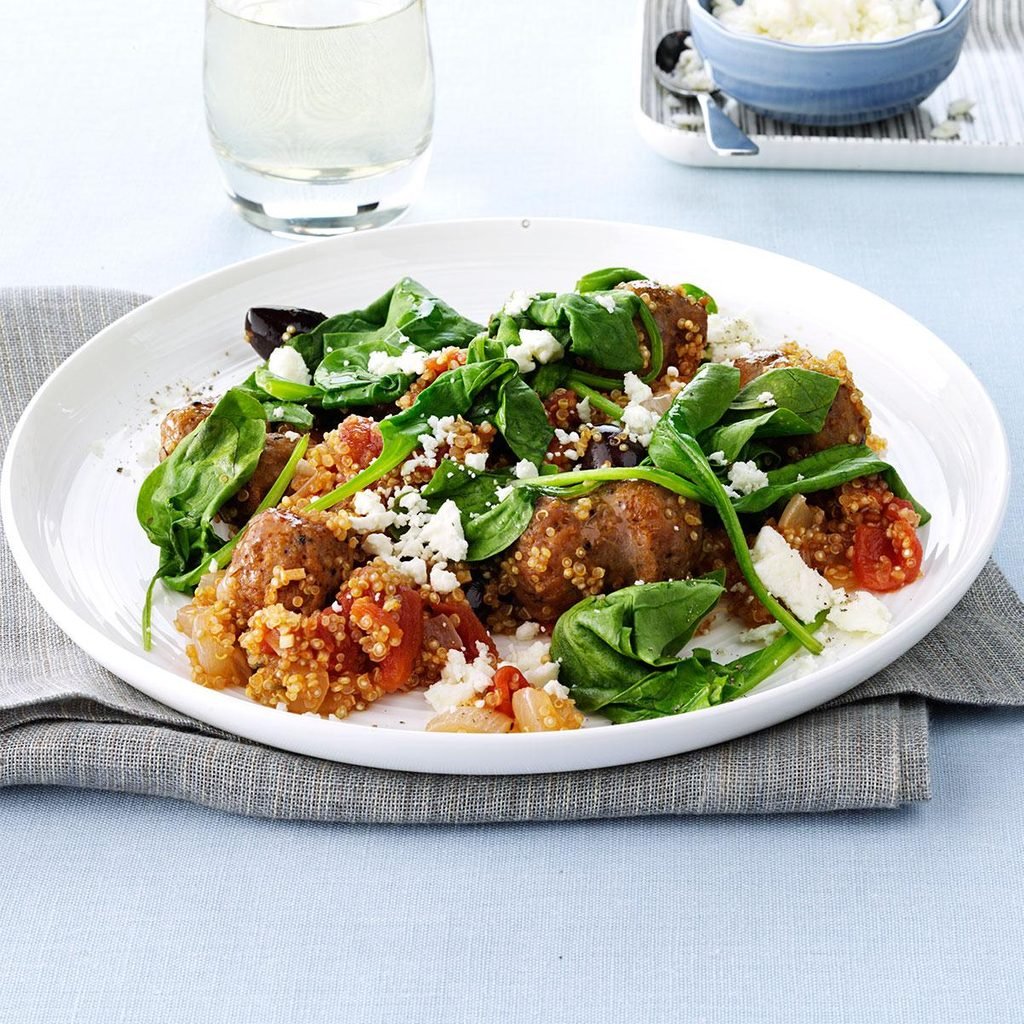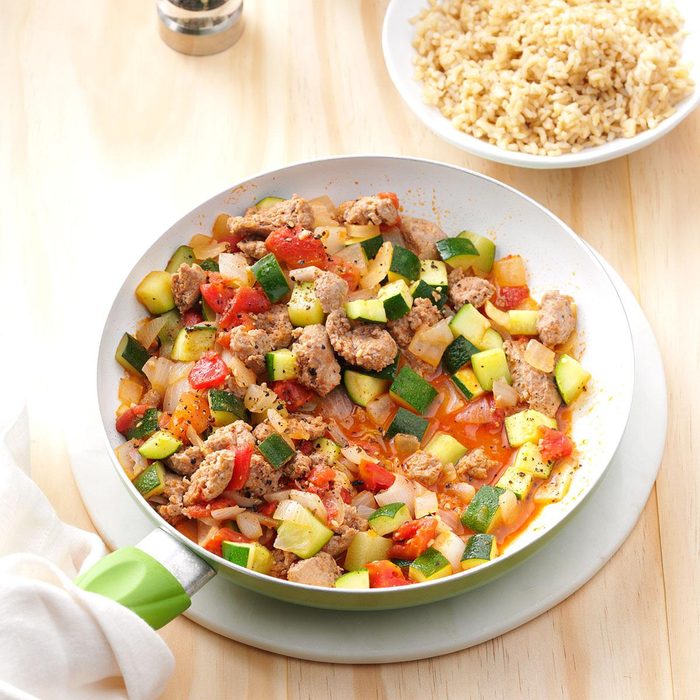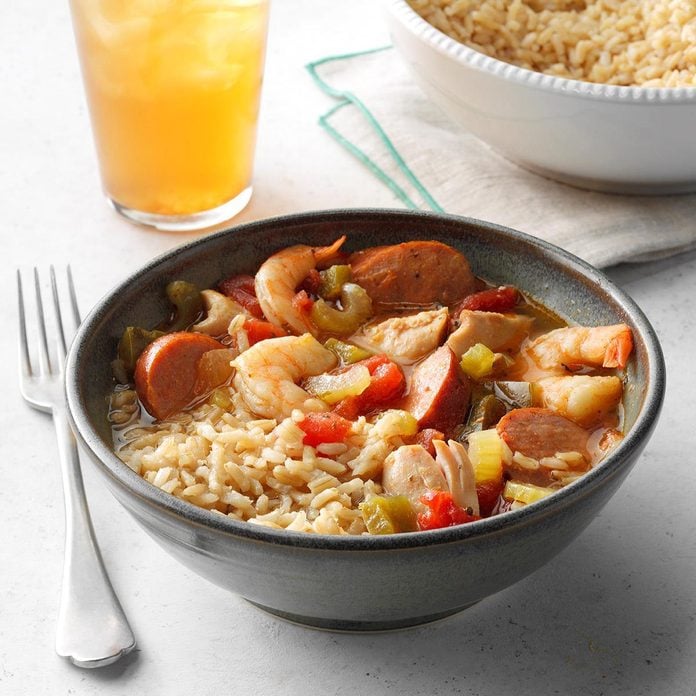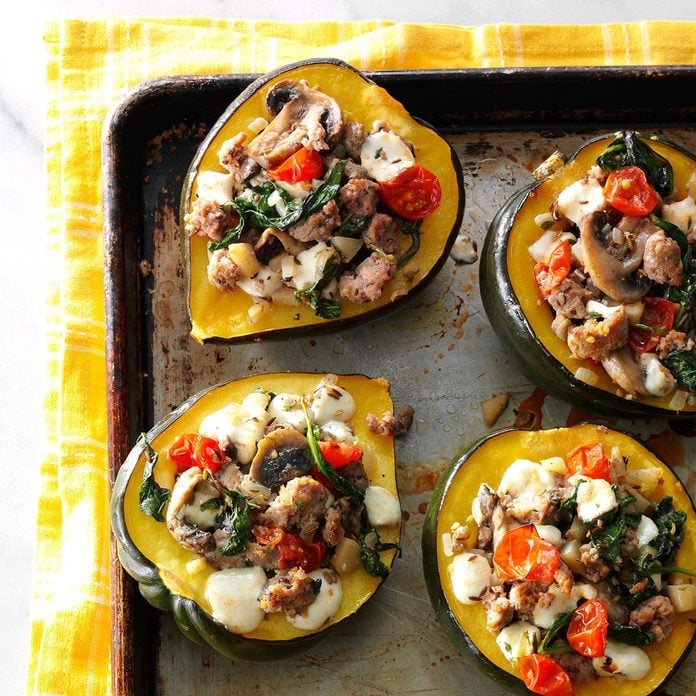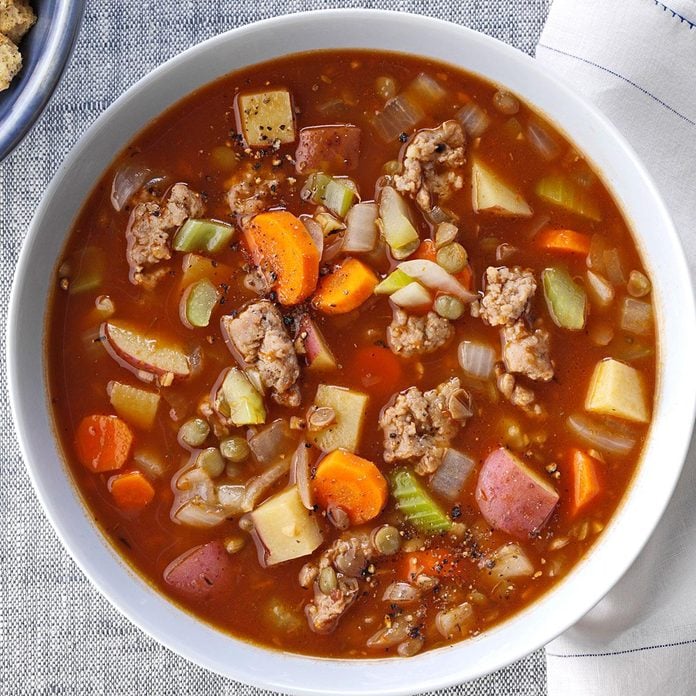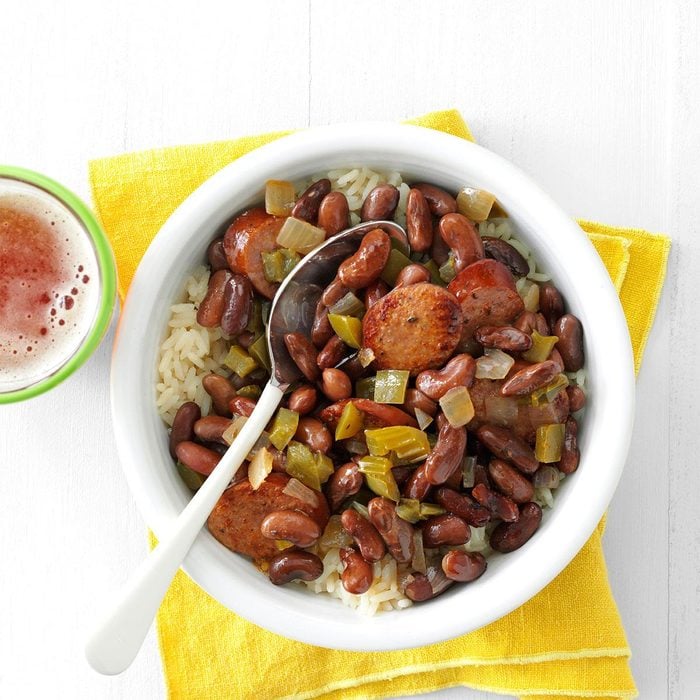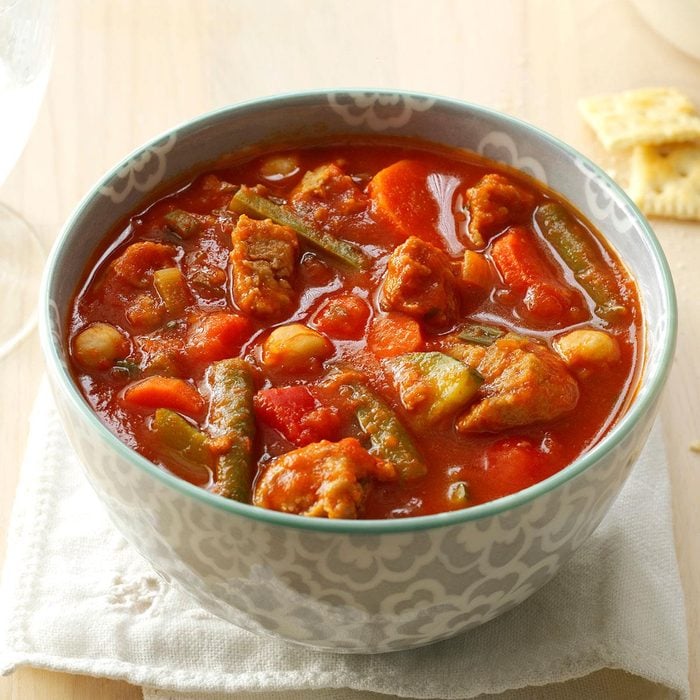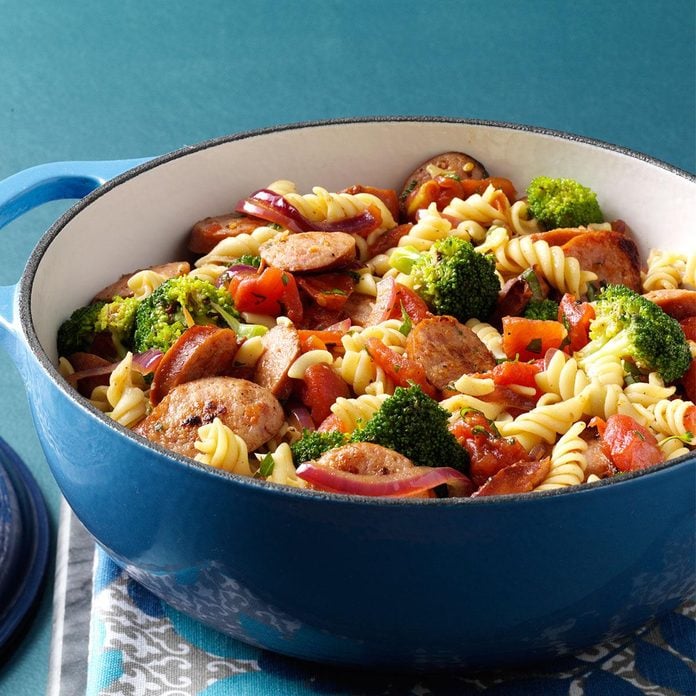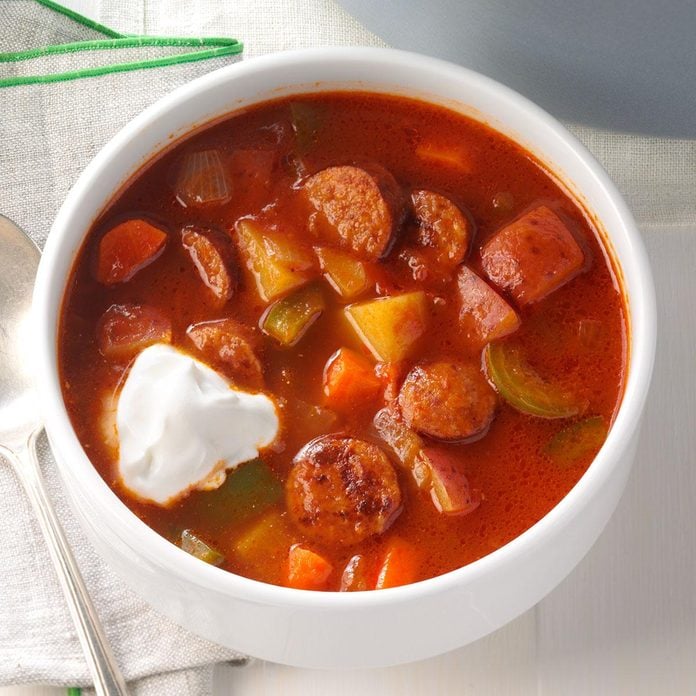Peasant SkilletI prepare this supper frequently throughout the year, substituting whatever vegetables are in season. No matter how often I make it, I'm always asked for the recipe. —Lisbeth Whitehead, Watertown, South Dakota
Potato-Sausage Foil PacksWe had these smoky campfire bundles at a friend's house for dinner and loved the simplicity of this great summer meal. Now we often make it for summer weeknight dinners. —Alissa Keith, Forest, Virginia
Kielbasa Hot Potato SlawI like the challenge of cooking lighter meals that pack big flavor. This one, which came from a dear friend, fits the bill. My son rated it a 10 out of 10! —Beverly Batty, Forest Lake, Minnesota
My Best-Ever JambalayaI tried to mimic Jambalaya from my favorite restaurant and it turned out so well my daughter and husband now prefer my recipe and won't order it when we go to the restaurant! —Alexis Van Vulpen, St. Albert, Alberta
Roasted Kielbasa & VegetablesI like this dish featuring
kielbasa and veggies for two reasons: It's so hearty, and it’s a one-pan meal. That’s a win-win dinner! —Marietta Slater, Justin, Texas
Bean Soup with SausageThis soup is so simple to put together with ingredients you might keep on hand, and it’s delicious, too. The broth with potato, meat and vegetables makes it so satisfying. —Gail Wilkerson, House Springs, Missouri
Sausage Chicken JambalayaFor anyone who enjoys entertaining, this jambalaya is the perfect one-pot meal to feed a crowd. It’s comforting, spicy and easy to make.—Betty Benthin, Grass Valley, California
Confetti Kielbasa SkilletHere's one of my husband's favorite dishes. When it's in season, substitute fresh corn for frozen. Add a dash of cayenne pepper if you like a little heat. —Sheila Gomez, Shawnee, Kansas
Sausage & Vegetable Skillet DinnerI threw this sausage recipe together one night to use up produce before going out of town. Who knew it was going to be such a hit! Now it’s a recipe I turn to whenever time is tight. —Elizabeth Kelley, Chicago, Illinois
Spicy Roasted Sausage, Potatoes and PeppersI love to share my cooking, and this hearty sheet-pan dinner has built a reputation for being tasty. People have actually approached me in public to ask for the recipe. —Laurie Sledge, Brandon, Mississippi
Zucchini & Sausage Stovetop CasseroleGather zucchini from your garden or farmers market and start cooking. My family goes wild for this wholesome casserole. You can grate the zucchini if you'd like. —LeAnn Gray, Taylorsville, Utah
Potluck Sausage CasseroleWhenever my husband digs in to this pasta casserole full of Italian sausage and veggies, he gets a big smile on his face. I love that! —Jane Davis, Marion, Indiana
Lentil & Chicken Sausage StewThis hearty and healthy stew will warm your family right down to their toes! Serve with cornbread or rolls to soak up every last morsel. —Jan Valdez, Chicago, Illinois
Spicy Touchdown ChiliFor me, football, cool weather and chili just seem to go together. Whether I’m cheering on the local team on a Friday night or enjoying a Saturday afternoon of Oklahoma Sooner football with some friends, I enjoy serving this chili on game day. —Chris Neal, Quapaw, Oklahoma
Pork Chops with Scalloped PotatoesMom always managed to put a delicious hearty meal on the table for us and for our farmhands. This all-in-one comforting pork chops recipe reminds me of home. —Bernice Morris, Marshfield, Missouri
Potato Kielbasa SkilletNo need to hunt through kielbasa and potato recipes, this smoky take steals the show as a hearty home-style, all-in-one meal. It's especially perfect on those cold late fall and early winter nights. —Taste of Home Test Kitchen, Milwaukee, Wisconsin
Kielbasa Cabbage SkilletSpicy kielbasa sausage and plentiful cabbage and potatoes give this dish a pleasing Old World flair. My husband never liked cabbage before I made this, but now he does! —Romaine Wetzel, Ronks, Pennsylvania
Southwest Barley & Lentil SoupMy family makes lentil soup every new year for good luck. My mom has been making it since I was little. Over time, we've tweaked it so that all our family and friends love it. —Kristen Heigl, Staten Island, New York
Hearty Maple BeansI modified this recipe to suit my family's taste. It's a great side dish for a backyard barbecue with hamburgers and hot dogs. It can be made in advance and kept warm in a slow cooked for hours without losing any flavor. —Margaret Glassic, Easton, Pennsylvania
Bacon Potato BakeThis cheesy potato casserole is always popular. It's a nice change from mashed potatoes and with a bread crumb and crumbled bacon topping, it looks as good as it tastes. —Helen Haro, Yucaipa, California
Caribbean Chicken StewI lived with a family from the West Indies for a while and enjoyed watching them cook. I lightened up this Caribbean chicken stew by leaving out the oil and sugar, removing the skin from the chicken and using
chicken sausage. It's just as good. —Joanne Iovino, Kings Park, New York
BLT SkilletThis quick weeknight meal reminds me of a BLT, with its chunks of bacon and tomato. The whole wheat linguine gives the skillet dish extra flavor and texture. —Edrie O'Brien, Denver, Colorado
Israeli Couscous & Chicken Sausage SkilletOur comfort food is a big plate of sausage with couscous. Add some onion, celery, a little heat and a sprinkle of feta. —Angela Spengler, Tampa, Florida
Mediterranean One-Dish MealI came up with this recipe one night while improvising with what I had on hand. I love to make simple, healthful, one-dish meals with lots of vegetables. Feta and Greek olives give this one a depth of flavor people seem to love. —Donna Jesser, Everett, Washington
Sausage Zucchini SkilletI began serving a version of this dish as a side with grilled salmon. I added sausage and rice—or noodles—to make a complete meal-in-one. —Debby Abel, Flat Rock, North Carolina
Meaty Slow-Cooked JambalayaThis recipe makes a big batch of delicious, meaty gumbo. Stash some away in the freezer for days you don't feel like cooking. —Diane Smith, Pine Mountain, Georgia
Chicken Sausages with PeppersChicken sausage is lower in calories compared to its pork counterpart, but it doesn't skimp on the bold, savory flavors you love. Try it with sweet, crunchy bell peppers for a fast and healthy dinner. —Deborah Schaefer, Durand, Michigan
Turkey Sausage-Stuffed Acorn SquashFinding healthy recipes the family will eat is a challenge. This elegant squash is one we love, and it works with pork or chicken sausage, too. —Melissa Pelkey Hass, Waleska, Georgia
Chunky Sausage Lentil SoupLentils are an inexpensive but nutritious power food, and these days, a hot, filling and flavorful family meal at a great price is a real comfort. My husband just loves this soup and it freezes well. —Donna Scarano, East Hanover, New Jersey
Slow Cooker Red Beans & SausageBeing from Louisiana, my go-to comfort food is red beans and rice. The Crock-Pot makes it so easy and the recipe reminds me of Sunday family dinners going back generations. Serve it as a
slow-cooker side dish or make it a meal with hot buttered corn bread. —Lisa Bowie, Las Vegas, Nevada
Turkey Sausage Soup with Fresh VegetablesOur family is big on soup. This favorite is quick to make and very tasty, and it gives me plenty of time to have fun with my kids and grandkids while it slow-cooks. —Nancy Heishman, Las Vegas, Nevada
Pasta & Broccoli Sausage SimmerI created this meal when trying to use up a large head of broccoli. My family requests it at least once a week, which is handy because we always have the ingredients. —Lisa Montgomery, Elmira, Ontario
Andouille Sausage SoupI make a soup every football Sunday. I came up with this recipe because I wanted to use lots of vegetables to keep it healthy, but wanted it to be interesting. My wife suggested adding the andouille and now it's one of my favorite andouille sausage recipes. —Steven Thurner, Janesville, Wisconsin
